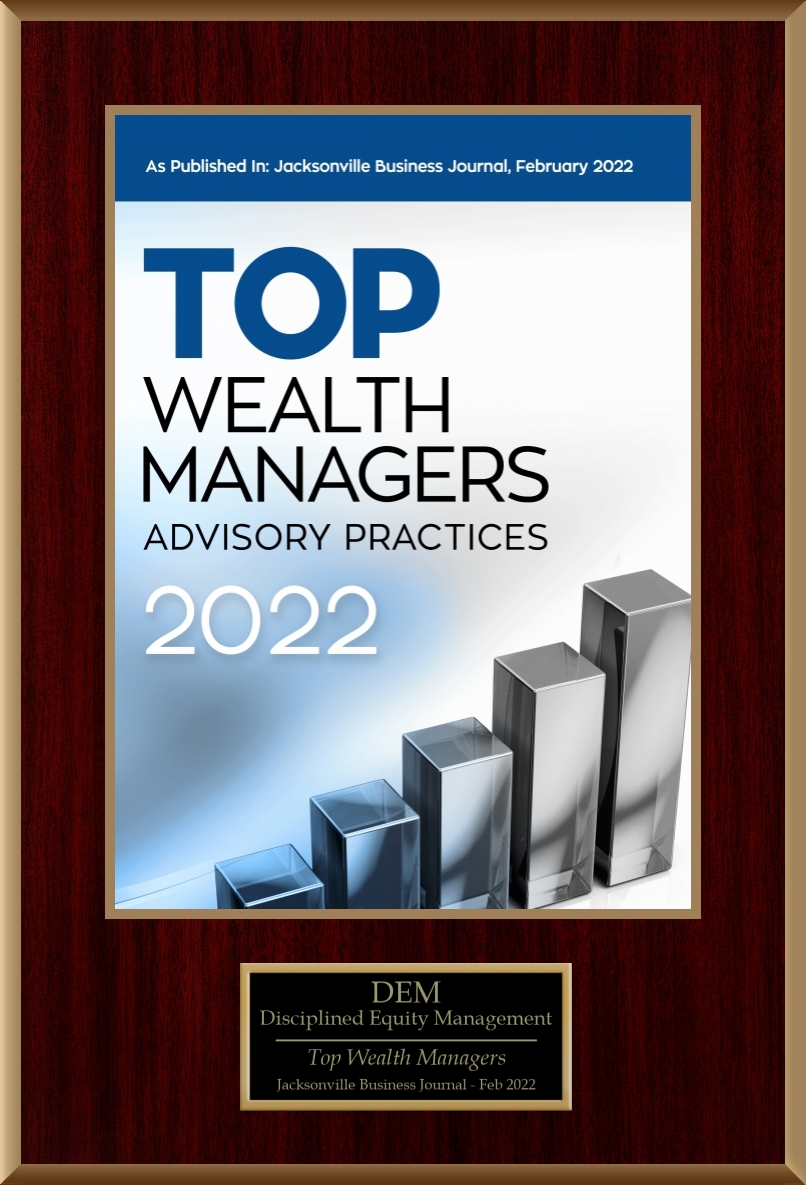2024 Q1 Newsletter
Intelligent Investing
Don Davey
As your family’s trusted advisor, our primary responsibility is to engineer a Plan that optimizes your chances of achieving your most cherished lifetime goals. Our Plans must consider your entire financial situation, including your assets, liabilities, income, expenses, taxes, insurance, charitable giving, and estate plans. Once formulated, we fund our Plans using equity investments. This raises the question: What is the optimal way to invest in equities?
Investors typically pursue strategies designed to maximize returns by betting on specific securities, sectors, asset classes, countries, or time periods. However, history has shown these bets often go awry. Let’s look at some examples.
Security Risk: The riskiest strategy an investor can pursue is overinvesting in a single security, which also results in overexposure to one particular sector, asset class, and country. History is littered with examples of once-dominant companies that eventually went bankrupt, wiping out shareholder equity entirely. The collapse of Lehman Brothers, WorldCom, General Motors, Enron, Pacific Gas & Electric, and Winn-Dixie are just a few examples that come to mind.
Sector Risk: Owning multiple securities within a single sector, such as finance, healthcare, or technology, is only slightly better than overinvesting in a single security. This strategy’s flaws became painfully apparent to the millions of investors who loaded up on tech stocks during the 1990s in anticipation of the internet ushering in a completely New Era. Tragically, after a decade of annualized returns exceeding 20%, the Nasdaq collapsed by more than 85% when the dot-com bubble burst in March 2000.
Asset Class Risk: It’s clear that overinvesting in a single security or sector is dangerous. But what about investing in all stocks across all sectors within a preferred asset class? For example, small caps have outperformed large caps over the long term, so why not build an equity portfolio entirely out of small caps? But as robust as it is, the small cap premium can disappear for extended periods. Case in point: the trailing 20-year performance of US small caps versus US large caps recently turned negative for the first time in history. Even the most patient and disciplined investors may have difficulty watching as their entire portfolio underperforms for such an extended period without eventually succumbing to the most dangerous four words in investing: “It’s different this time.”
Country Risk: Overexposure to a single country carries similar risks. After a decade of rapid productivity growth driven by technological and manufacturing advancements, Japan’s Nikkei index reached 39,000 in 1989. Investors flocked to the “Japanese Miracle” as it grew to an astonishing 45% of global equity market capitalization versus just 33% for the US. More than three decades of alternating recession and stagnation followed, and it was only in the past month that the Nikkei surpassed the 39,000 level again.
Timing Risk: Investing in a diversified global index fund such as the MSCI All Cap World Index may be a more sophisticated strategy. However, even these investors may be tempted to exit the market in advance of wars, recessions, hyperinflation, and other events that typically trigger market downturns. The data show that missing only a handful of the best days can reduce the long-term returns of equities to below that of Treasury bills. Because the economy cannot be consistently forecast nor the market consistently timed, we deem such investors doomed to fail.
While the past cannot predict the future, it can provide valuable insights into its possibilities. For instance, it seems possible that Nvidia may not continue to dominate the AI chip market forever, US Large Cap Growth may not always lead the market higher, and/or the US may not retain its status as the world’s largest economy indefinitely. Fortunately, we can mitigate all these risks through diversification.
We DEM Spartans start by spreading our hard-earned savings across more than 15,000 of the world’s best companies with exposure to every sector, every asset class, and every country. We then tilt our portfolios toward small, value, and profitable companies that offer potentially higher expected returns. As components surge and become overvalued, we systematically reduce their exposure and increase our stake in undervalued components elsewhere. Finally, we commit to owning our portfolios throughout the inevitable ups and downs we are sure to experience during our lifetimes.
Rather than trying to maximize returns by placing bets that could derail our Plans, we invest to maximize the probability of achieving our most cherished lifelong goals. This is how we define Intelligent Investing.
Don Davey
Senior Portfolio Manager
Disciplined Equity Management
Plan Appropriately, Invest Intelligently, Diversify Broadly, Ignore the Noise



